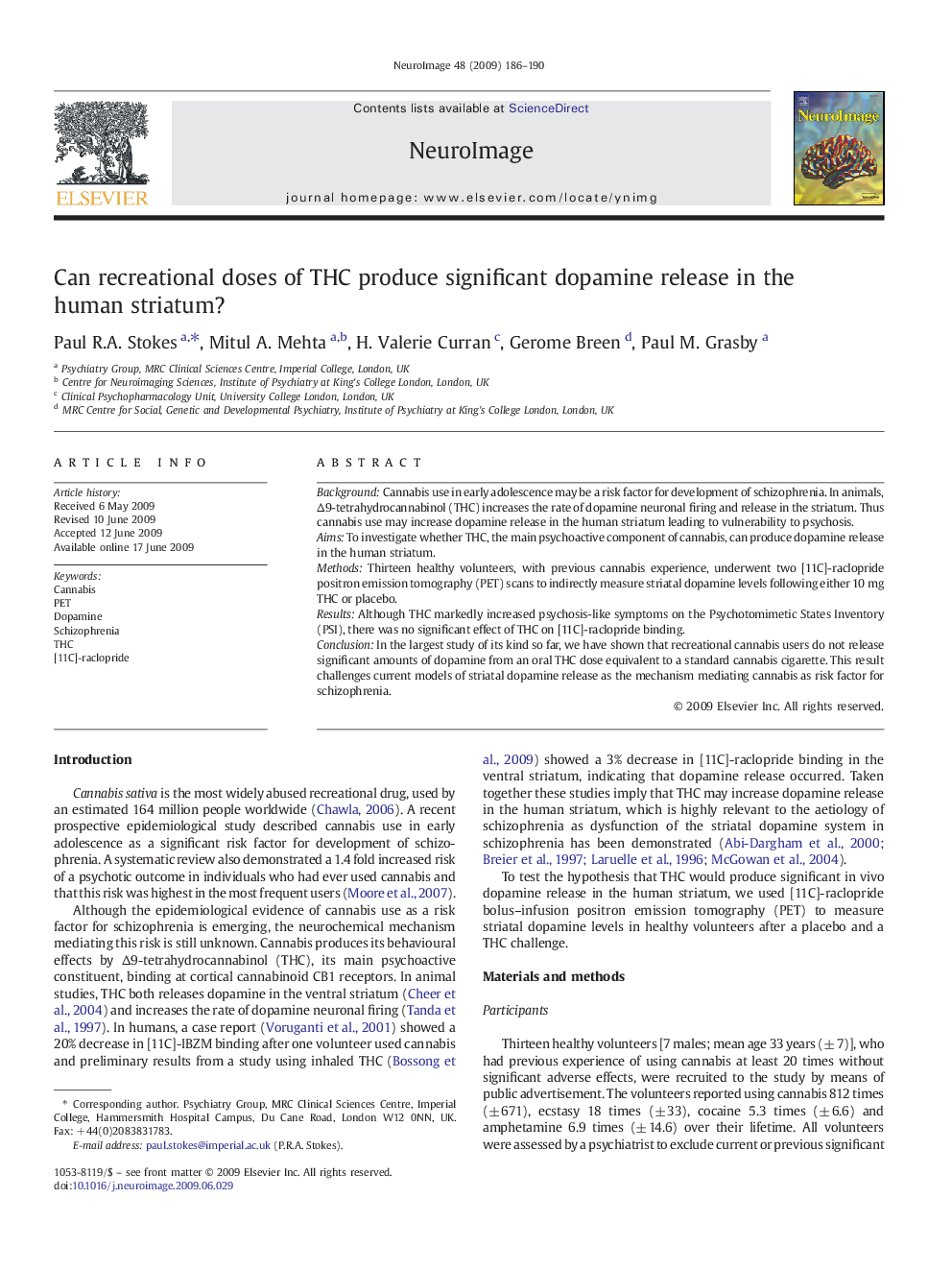| Article ID | Journal | Published Year | Pages | File Type |
|---|---|---|---|---|
| 3072670 | NeuroImage | 2009 | 5 Pages |
BackgroundCannabis use in early adolescence may be a risk factor for development of schizophrenia. In animals, Δ9-tetrahydrocannabinol (THC) increases the rate of dopamine neuronal firing and release in the striatum. Thus cannabis use may increase dopamine release in the human striatum leading to vulnerability to psychosis.AimsTo investigate whether THC, the main psychoactive component of cannabis, can produce dopamine release in the human striatum.MethodsThirteen healthy volunteers, with previous cannabis experience, underwent two [11C]-raclopride positron emission tomography (PET) scans to indirectly measure striatal dopamine levels following either 10 mg THC or placebo.ResultsAlthough THC markedly increased psychosis-like symptoms on the Psychotomimetic States Inventory (PSI), there was no significant effect of THC on [11C]-raclopride binding.ConclusionIn the largest study of its kind so far, we have shown that recreational cannabis users do not release significant amounts of dopamine from an oral THC dose equivalent to a standard cannabis cigarette. This result challenges current models of striatal dopamine release as the mechanism mediating cannabis as risk factor for schizophrenia.
